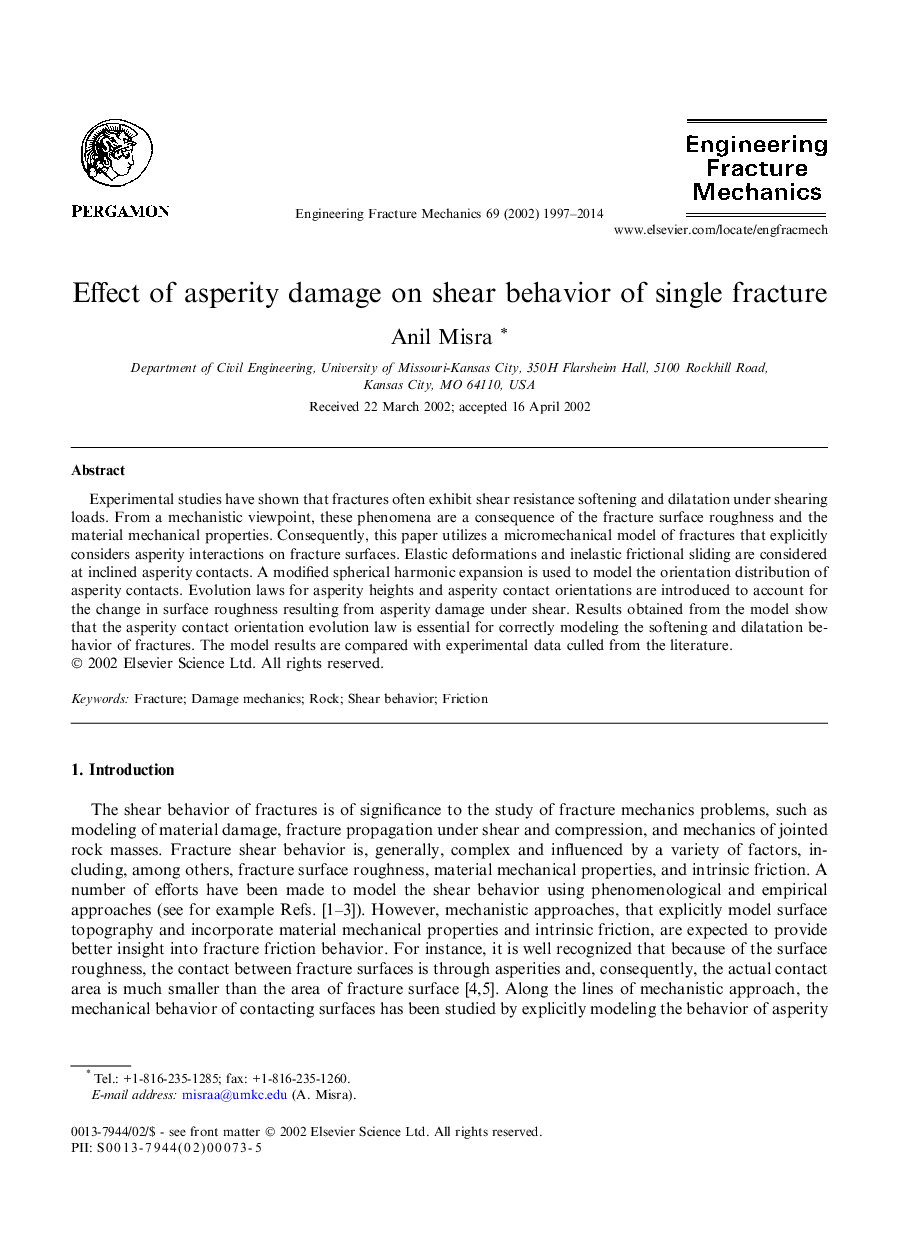| Article ID | Journal | Published Year | Pages | File Type |
|---|---|---|---|---|
| 769360 | Engineering Fracture Mechanics | 2014 | 18 Pages |
Experimental studies have shown that fractures often exhibit shear resistance softening and dilatation under shearing loads. From a mechanistic viewpoint, these phenomena are a consequence of the fracture surface roughness and the material mechanical properties. Consequently, this paper utilizes a micromechanical model of fractures that explicitly considers asperity interactions on fracture surfaces. Elastic deformations and inelastic frictional sliding are considered at inclined asperity contacts. A modified spherical harmonic expansion is used to model the orientation distribution of asperity contacts. Evolution laws for asperity heights and asperity contact orientations are introduced to account for the change in surface roughness resulting from asperity damage under shear. Results obtained from the model show that the asperity contact orientation evolution law is essential for correctly modeling the softening and dilatation behavior of fractures. The model results are compared with experimental data culled from the literature.
